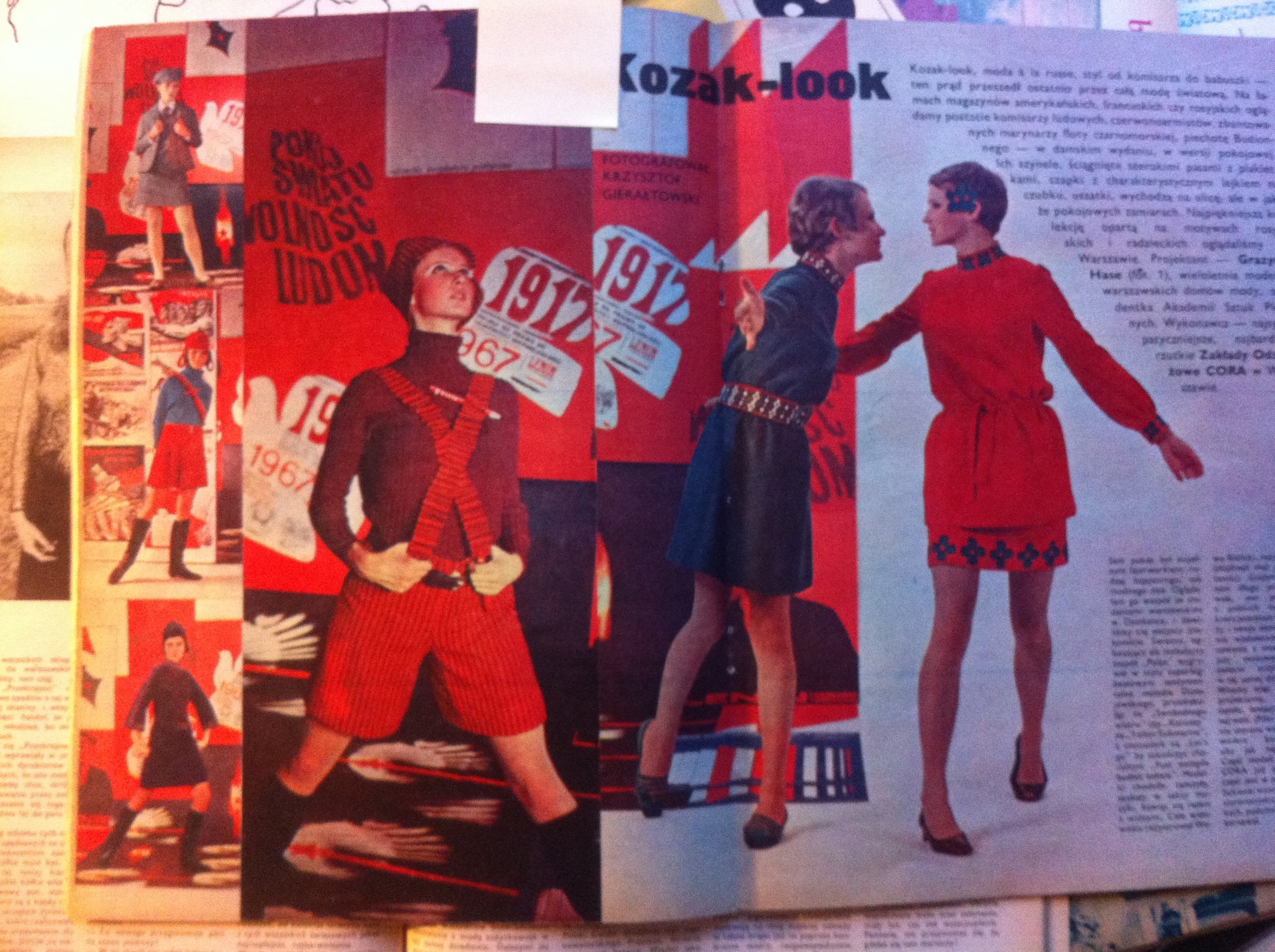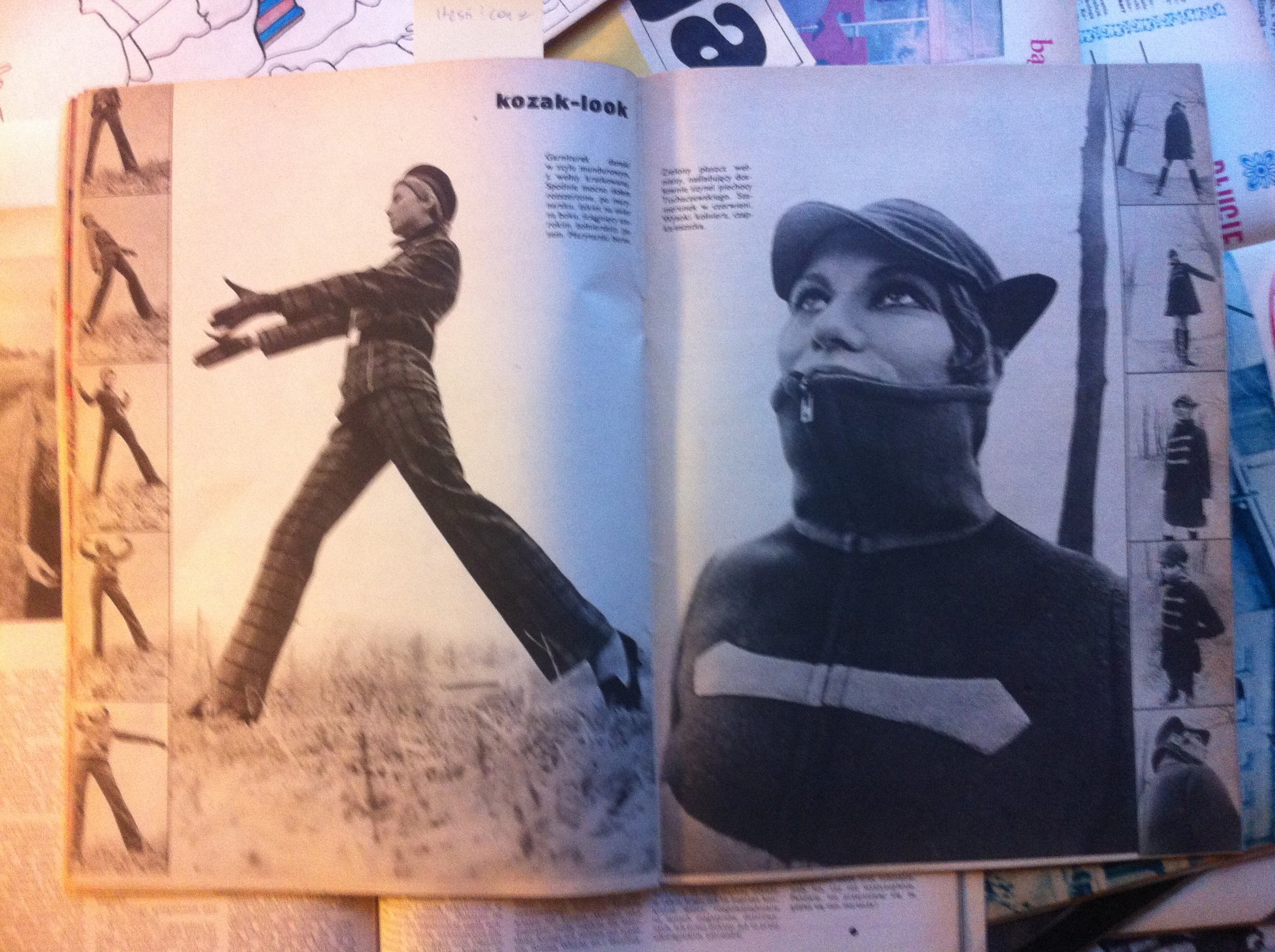Hase belongs to the pantheon of Poland’s great communist-era designers. Hase began her career as a model and featuring on the cover of prestigious magazine
The Hase Revolution
Grażyna Hase’s debut collection for Cora fashion house, project ‘Rosyjska Carewna’. Show in Dziekanka club, 07.11.1967 in Warsaw. Photo: Cezary Marek Langda ©pap
Alongside Grabowska, Antkowiak and Hoff, Grażyna Hase belongs to the pantheon of Poland’s great communist-era designers. The youngest of the four, Hase began her career as a model, working with Warsaw’s top fashion houses and featuring on the cover of Przekrój magazine in 1957.
Hase became a household name with her 1967 collection for the Cora fashion house. Organised as part a series of events commemorating the fiftieth anniversary of the October Revolution, the show took place in Dziekanka, at the time one of Warsaw’s trendiest clubs. Hase’s designs for this collection were inspired by the culture of tsarist Russia and the USSR. Teresa Kuczyńska, Poland’s leading fashion critic at the time, described the style as “the Cossack-look, mode à la Russe, from commissar to babushka”. This carefully orchestrated show—which Kuczyńska dubbed “a happening”—featured live beat versions of Russian songs as well as Beatles hits. An article in Ty i ja magazine described how the models “danced, mingled with the audience and skipped in time with the music”. The event, which broke the mould of traditional, elegant and dignified shows in luxurious surroundings, caused a sensation.
kozak look i Ty i ja magazine (issue 93), photo Krzysztof Gierałtowski, 1968
Hase’s collection made reference to the costumes of the Russian peasantry, Red Army soldiers and Cossacks, with additional stylistic nods to Lenin and even Tolstoy’s Anna Karenina. Hase herself took to the stage in Leninist-style attire. The show, which took place a decade before Yves Saint Laurent’s a/w 1976 Russian-inspired collection, was covered by several foreign publications, including The Sunday Times.
By the 1970s, Grażyna Hase’s collections had a global audience, appearing on the catwalks of New York, Berlin, Toronto, Paris, Vienna, Hamburg, Milan and Moscow. The Cora fashion house also created clothing collections for the French market, such as the Pierre d’Alby fashion house in Paris.
Hase was famed for her ability to combine folk motifs and contemporary fashion. She successfully used traditionally inspired looks, such as her iconic peasant-style sheepskin jackets.
Cora collection in Paris, photo Andrzej Pruszkowski, Ty i ja (issues 148), 1972




